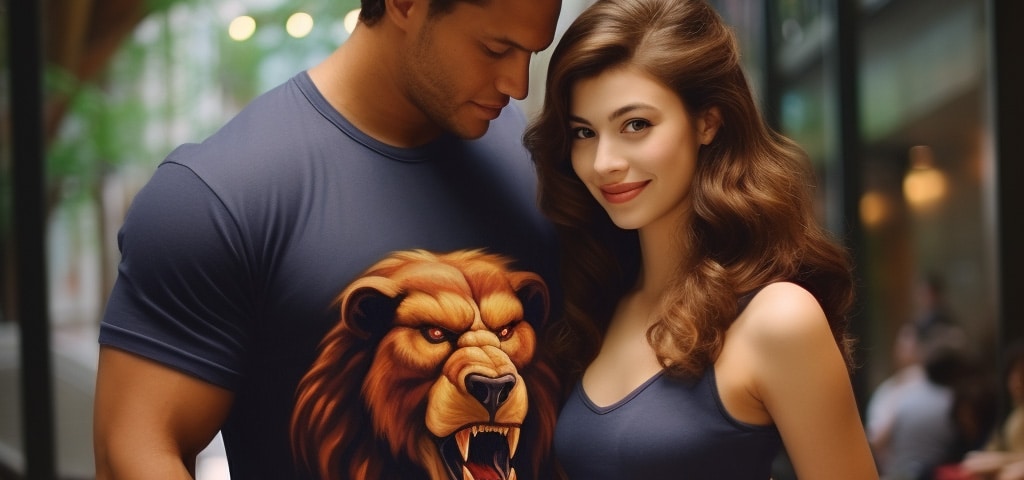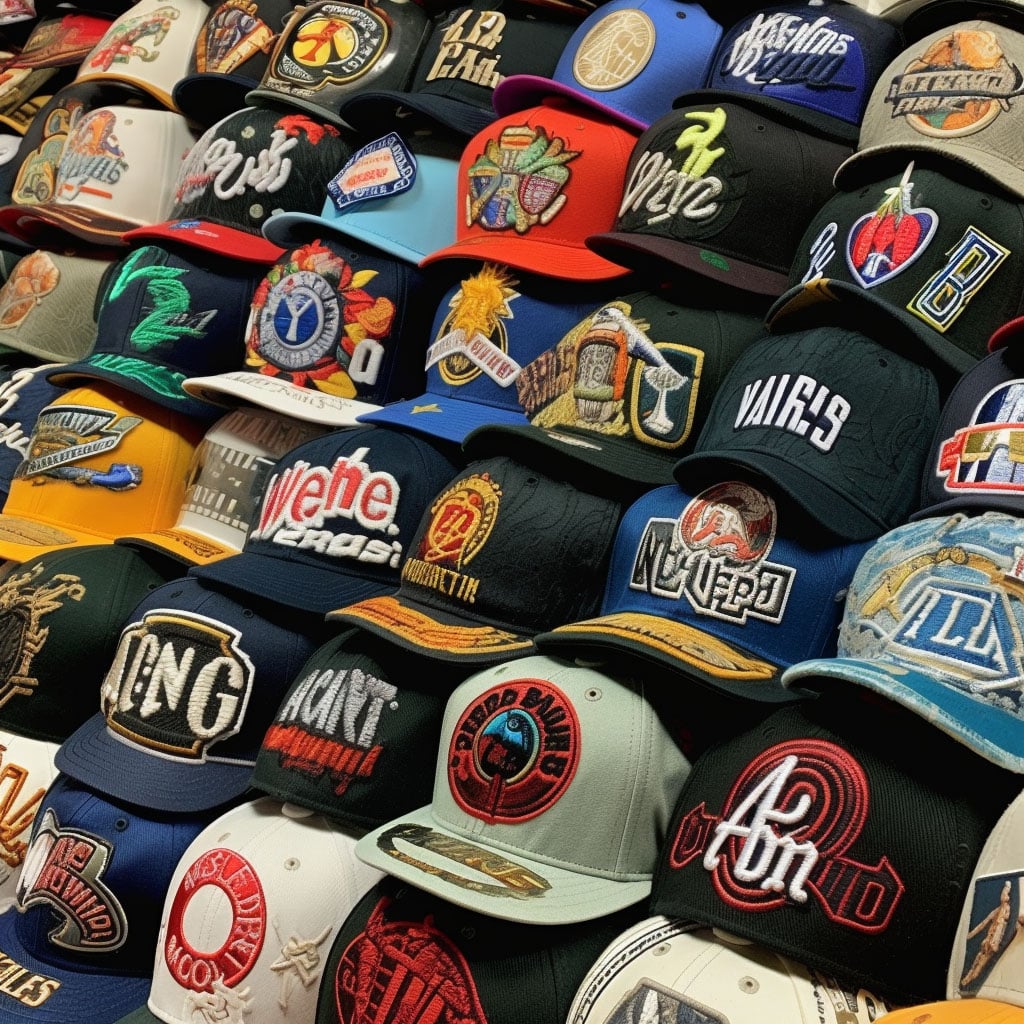Are you looking for the best printing method for your business?
Have you heard of DTG and DTF printing but aren’t sure which is right for you?
Don’t worry, we’ve got you covered.
In this article, we’ll compare DTG vs DTF Printing – Beauty vs The Beast.
We’ll look at cost, speed, quality, look and feel, versatility, and maintenance requirements to help you decide which method fits your needs best.
You may be surprised by what we uncover!
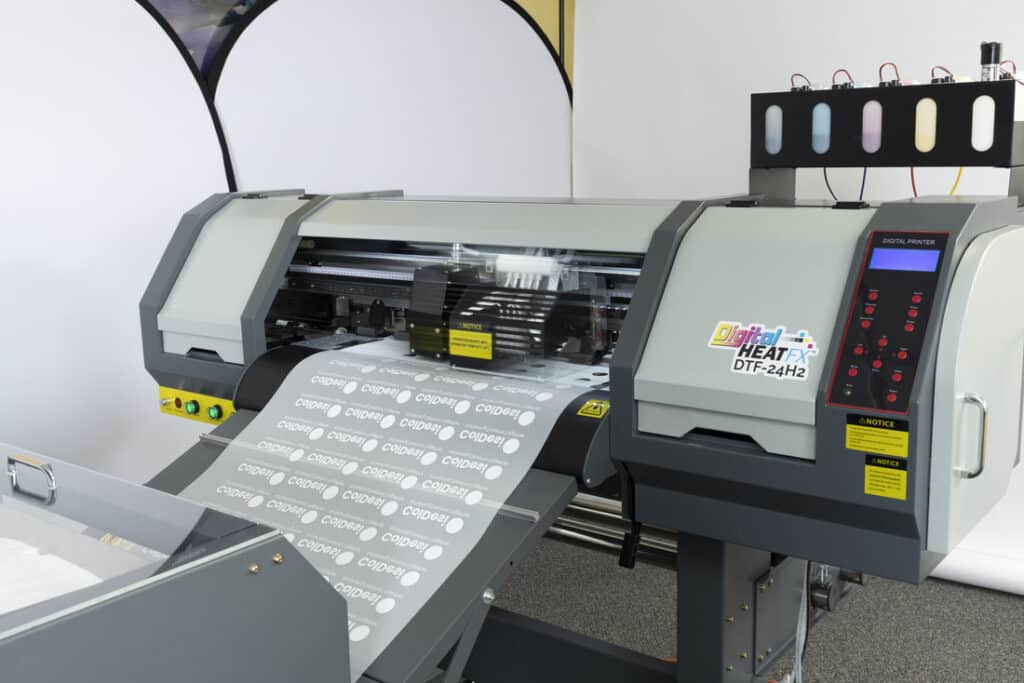
Key Takeaways
DTG Printing: The Beauty..
- DTG is a method of printing graphics directly onto textiles using specialized or modified inkjet technology.
- The print quality of DTG is often higher, providing a more detailed print.
- DTG works better with individual prints directly onto the garment.
- DTG is excellent for complex designs and multi-colored prints.
- DTG is an ideal method for small batch orders.
- DTG usually requires less overall setup time (per shirt), reducing the time between order and delivery.
- DTG can print on dark-colored fabrics with a white ink underbase.
- DTG printers are mostly designed to print onto 100% cotton or high cotton blend fabrics. Other fabrics require changes to the pre-treatment.
- The printing process is more straightforward and easier to understand for beginners. Thus, Direct-To Garment is the term…
- DTG printing can be more costly per unit compared to other printing methods. But is better than screen printing or White Toner Printers.
DTF Printing: The Beast…
- DTF printing is a newer technology where designs are printed on a special film before being heat-pressed onto a garment.
- DTF allows you to store the printed films for later use, thus it’s a good fit for bulk orders.
- The DTF process can work on almost any type of garment and fabric, including synthetic materials.
- DTF is more suitable for fulfilling larger orders quickly.
- Although DTF offers slightly lower print quality compared to DTG, it still provides a high-quality print.
- DTF offers great durability, as the design adheres strongly to the fabric.
- DTF can be used to print on various unique items beyond clothing, such as hats, shoes, and bags.
- The setup for DTF printing is more complex and may require more training to understand.
- DTF is generally more cost-effective for larger orders compared to DTG printing.
Overview of DTG Printing
Digital Direct-to-Garment (DTG) printing is a relatively tried and true technology that offers fast, efficient printing of full color designs onto garments, giving users the freedom to create highly detailed and complex prints with ease. DTG printing uses specialized inkjet printers and inks designed specifically for garments.
This allows for greater design options than what’s available with traditional screen-printing methods. The ink types used in DTG are water-based and offer an impressive range of colors while being environmentally friendly.
Additionally, this type of printing can be done on a variety of garment types including t-shirts, sweatshirts, hoodies, hats, and more. It also supports different types of fabrics such as cotton, polyester blends, Lycra/spandex blends or tri-blends like bamboo or rayon. However when printing on different types of fabrics, you have to make a choice regarding the pre-treatment.
When it comes to media selection for DTG printing projects, the possibilities are almost endless! The printer can print up to A3 size so businesses can choose whether they want their designs printed on small items such as t-shirts or large items such as banners.
The versatility offered by DTG makes it ideal for both personal use and commercial projects alike; from one-off custom pieces to large orders – no job is too big or too small! Its ability to produce high-quality prints quickly makes it an attractive option compared to other forms of garment decoration. With its low start-up costs and minimal waste production, there’s no reason not to give it a try if you’re looking into getting involved in apparel customization!
In short, digital direct-to-garment technology is perfect for those who demand quality prints but don’t have the time or resources necessary for traditional screen-printing techniques. It provides flexibility when choosing materials, which means that businesses have more creative control over their projects without compromising on the end product.
Overview of DTF Printing
If you’re in the market for high-quality apparel printing, you may have heard of Direct to Garment (DTG) printing. But have you heard of Direct to Film (DTF) printing?
DTF printing is a powerful printing technique that produces vibrant, long-lasting prints that are perfect for a variety of garments. Unlike DTG prints, which are printed directly onto the garment, DTF prints are first printed on a transfer film before being heat-pressed onto the garment. This process ensures an incredibly crisp, clear, and durable image that won’t fade over time.
Designs Pop with Color and Substance
So whether you’re looking to create custom t-shirts, sweatshirts, or any other type of garment, DTF printing is a fantastic choice that’s sure to make your designs pop!
And then, the final step in this process is applying the printed design to the garment using various techniques of heat transfer or heat pressing.
DTF printing offers a unique solution for customizing garments with intricate designs that cannot be achieved through traditional screen printing methods and provides an efficient way to produce small batches with quick turnaround times.
Easier than Traditional Screen Printing
With advancements in technology, there has been a recent surge in popularity among businesses who want to offer their customers personalized apparel without sacrificing quality or functionality.
Additionally, since no screens are needed for this process it reduces costs associated with production making it ideal for smaller businesses or startups who need to keep overhead low while still providing high-quality products.
Whether you’re looking for cost-effective solutions or innovative ways to customize apparel, DTF printing may be just what you need! With its pre-treatment process, wide variety of fabric types available along with various ink types and printing techniques available, it’s easy to see why this technique is becoming increasingly popular amongst designers looking to add more value into their products without sacrificing quality or functionality!
Cost Comparison
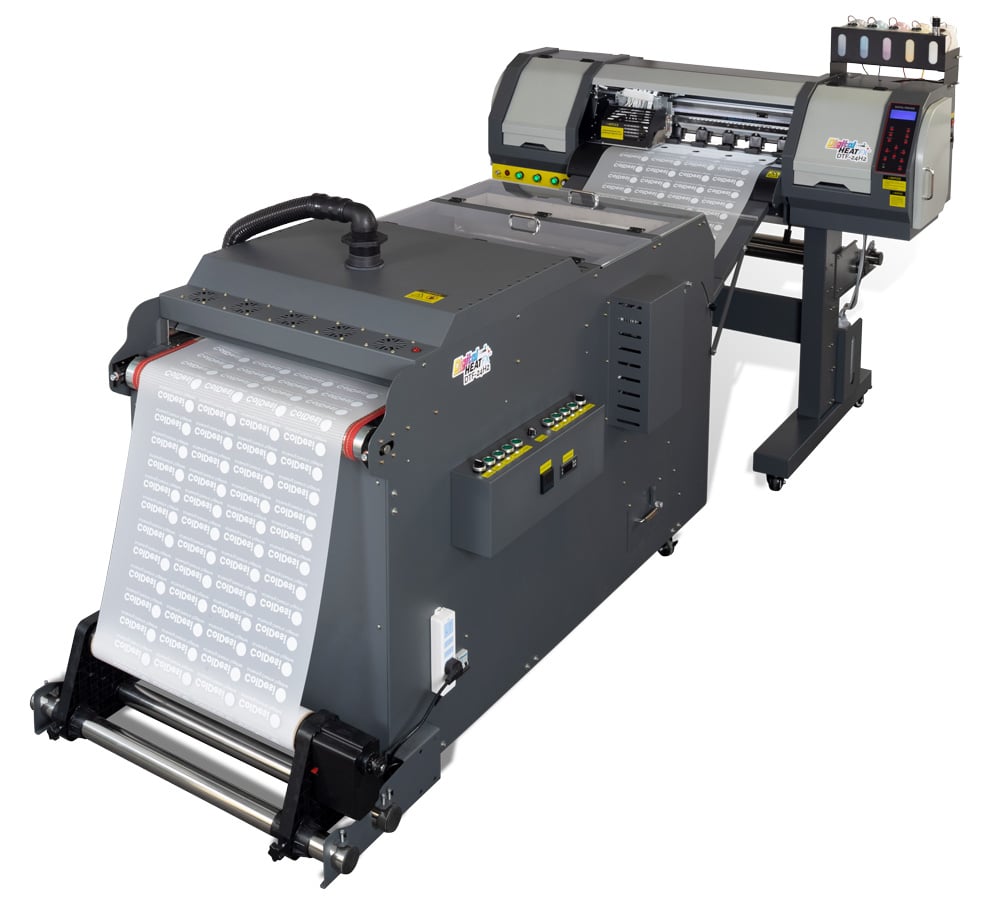
Comparing the costs of DTG and DTF printing can seem like comparing beauty and the beast – but it doesn’t have to be! When it comes to cost effectiveness, both methods require some level of investment.
For DTG printing, you’ll need a printer, ink cartridges, pre-treatment fluid, and other materials that are specific to a particular type of printer. On the other hand, DTF requires a lower initial investment as only a few items such as the printer and the film. Don’t forget the powder too!
Better compared to other printing methods
However, both methods require additional costs associated with heat presses or pressing equipment. But unlike white toner printers, the costs are less because with both these methods, you don’t have to buy special papers as an intermediary.
When it comes to waste management and environmental impact, DTG printing generally has more favorable outcomes than DTF. The amount of materials used in DTG is much less than those used in DTF, which makes it more eco-friendly despite its use of ink cartridges that can contain potentially hazardous chemicals depending on their make-up.
Not a clear winner DTG vs DTF – consider both.
In terms of cost comparisons between DTG vs DTF, there is not necessarily one clear winner – it all depends on what your needs are from the outset. If you’re looking for an economical solution, then you likely want to lean towards DTF, while those who prioritize quality control might prefer DTG since its prints tend to last longer with minimal wastage due to misalignment or shrinkage caused by incorrect pressing temperatures.
Ultimately, each method has its own pros & cons, which should be weighed against your individual needs before making an investment decision.
Speed Comparison
When it comes to speed, DTG and DTF printing can be like a race between a hare and a tortoise – the outcome depends on how much time you’re willing to wait!
Direct-to-garment printing (DTG) is often considered the fastest method of producing low volume prints. This means that turnaround times are generally shorter than other methods, plus it doesn’t require any setup costs or minimum orders.
On the other hand, direct-to-film (DTF) printing involves creating an image film which must be heat transferred onto fabric. This process may take longer than DTG because of the additional steps required for transferring the ink onto fabric. But the pressing time is less.
Save Those DTF Films
If you’re planning to repeat the same design over and over again, DTF printing with the ability to store films for up to a year is the way to go!
With direct to film printing technology, you can easily print your design onto a film that can be stored and used again at any time, without the need to set up the entire process from scratch. This method is much faster than DTG prints, as you can simply place the film and start pressing right away.
10 seconds later – Boom
Not only is it speedy, but also cost-effective, making it a great choice for businesses with high-volume printing needs. So, if you want to save time and effort in the long run, consider DTF printing with film storage for your repeated designs.
Both DTG and DTF printing have their own advantages when it comes to speed: DTG prints are ideal for smaller print sizes and shorter turnaround times while DTF is better suited for larger prints and quicker turnaround times due to its ability to handle large volumes of films more quickly.
No matter which method you choose, one thing’s for sure: there’s no wrong choice when it comes to choosing your desired print size and turnaround time! With both options offering low volume printing capabilities as well as varying levels of environmental impact, it all boils down to what works best for you and your needs.
Ultimately, whether it’s quicker production or higher quality results you’re after, both methods offer something unique that can help get your project off the ground faster!
Quality Comparison
When it comes to print quality, DTG and DTF stand out like the sun and the moon – one may be faster but that doesn’t mean it’s always better!
When considering customer preferences, DTG printing is favored for its ability to produce vibrant colors on a variety of garments. The ink is printed directly onto the garment using advanced technology, which allows for greater control over color saturation and vibrancy.
Additionally, since all of the inks are water-based, there are no harsh chemicals involved in the printing process. This makes DTG prints more environmentally friendly than DTF prints.
On the other hand, DTF printing provides a unique advantage when it comes to washability tests and print longevity. Since this form of printing involves heat pressing inks onto garments using an adhesive powder, there is less risk of fading or discoloration after multiple washes.
Furthermore, you can choose from an even wider selection of garments for your design without worrying about how they will look after being washed multiple times.
Overall, each type of printing has its advantages depending on the application and desired outcome.
For those looking for brighter colors and more intricate designs on their garments without sacrificing quality or environmental friendliness, DTG is definitely worth considering; however if you need superior washability and longer lasting prints then DTF could be your best option.
Color Accuracy
Moving on from quality comparison between Direct to Garment Printing (DTG) and Direct to Fabric Printing (DTF), let’s now dive into the color accuracy of these two technologies.
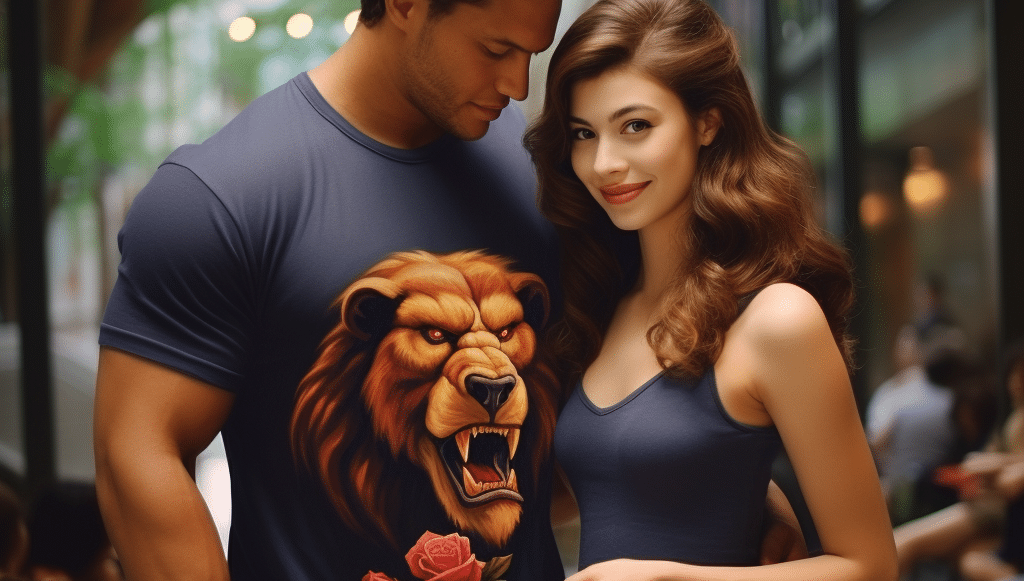
When it comes to printing on fabric, accuracy is key. Both DTF printing and DTG printing offer impressive color accuracy, making them popular choices for many businesses. While direct to garment (DTG) prints are created by printing directly onto the fabric, DTF printing involves printing onto a clear film which is then heat transferred onto the fabric.
Both methods offer great color accuracy, ensuring that designs are vibrant and true to their original form. Plus, with advancements in printing technology, both DTF and DTG are becoming more affordable and accessible for small businesses to incorporate into their printing processes. So, whether you’re looking to print logos on t-shirts or intricate designs on sweatshirts, both DTF and DTG printing are reliable options for achieving accurate and high-quality results.
So if you want a vibrant and accurate representation of colors for any kind of fabric without worrying too much about maintenance costs or environmental impact, then either DTG Printing and DTF Printing is definitely the way to go! Here are some advantages that come along with it:
- Better Representation: Accurate colors ensure your designs are represented as intended, maintaining the integrity and quality of your original artwork.
- Customer Satisfaction: Customers receive exactly what they expect, enhancing their satisfaction and trust in your product.
- Consistent Branding: For company shirts or promotional items, color accuracy is critical for consistent branding and recognition.
- Fewer Returns/Exchanges: Reduces the likelihood of returns or exchanges due to discrepancies between online visuals and the delivered product.
- Improved Details: Greater color accuracy can help emphasize finer details in your design, making complex images more clear and recognizable.
- Better Reviews: Satisfied customers are more likely to leave positive reviews and recommend your product, boosting your reputation.
- Repeat Business: Accurate product portrayal encourages repeat purchases and customer loyalty.
- Versatile Design Options: With good color accuracy, designers can use a wider range of colors and shades, leading to more versatile and unique designs.
Ink Adhesion

Adhering to the fabric surface is an important factor when it comes to attaining vivid colors with any printing technology, and DTG printing offers ink adhesion that can withstand multiple washes without fading or cracking. The water-based ink used in DTG printing ensures that the printed designs will remain vibrant for years without any compromise on color accuracy.
When it comes to printing on garments, two popular options are DTF printing and DTG printing. Although they use different processes, both provide great ink adhesion. With DTF printing, adhesive powder is used to create a base layer on the garment before the image is printed on top. DTG printing, on the other hand, prints directly onto the garment.
So which one should you choose? It really depends on your specific needs. DTF printing is great for printing on darker materials, as the adhesive powder is very durable. DTG prints, on the other hand, tend to have a softer feel and can be better for printing detailed images. Ultimately, both DTF and DTG printing offer unique benefits that can help your designs come to life.
Durability
While these methods differ in their approach to adhesion, both offer great durability. DTG printing, also known as Direct to Garment printing, uses inkjet technology to transfer ink onto the fabric directly.
This results in a vibrant design that is long-lasting and machine washable. On the other hand, DTF printing uses heat transfer ink film to create a design that is also durable and machine washable. No matter which method you choose, you can rest assured that your custom apparel will withstand daily wear and tear for a long time to come.
Look and Feel
DTG
Direct-to-garment (DTG) printing produces high-quality, custom t-shirts with vibrant, intricate designs. The full range of colors and photographic imagery are achievable, lending to a visually appealing product.
Unlike other printing methods, DTG prints directly onto the fabric, leading to a soft, comfortable finish. The ink penetrates the fabric fibers, integrating the design seamlessly and reducing the risk of cracking or peeling. This makes the print durable, although, like all printed garments, it can fade over time with repeated washing.
The shirt itself should also be high quality, often made from durable materials like heavyweight cotton or a cotton-polyester blend, with a smooth finish and well-stitched seams. In essence, a quality DTG-printed t-shirt combines visual appeal, comfort, and durability, enhancing its overall value.
DTF
The resulting print on a DTF t-shirt feels somewhat different than DTG. The design, once transferred, sits on top of the fabric, making it slightly raised and textured. However, the process produces a smooth finish that’s generally flexible and comfortable to wear.
The durability of DTF prints is commendable, resisting cracking and peeling effectively. However, with repeated washing, there can be gradual fading over time. The t-shirt itself, being high quality, should ideally be made from soft, durable materials, like cotton or a blend, with a good finish and well-sewn seams. So, a quality DTF-printed t-shirt combines great visuals with comfortable wear and durability.


